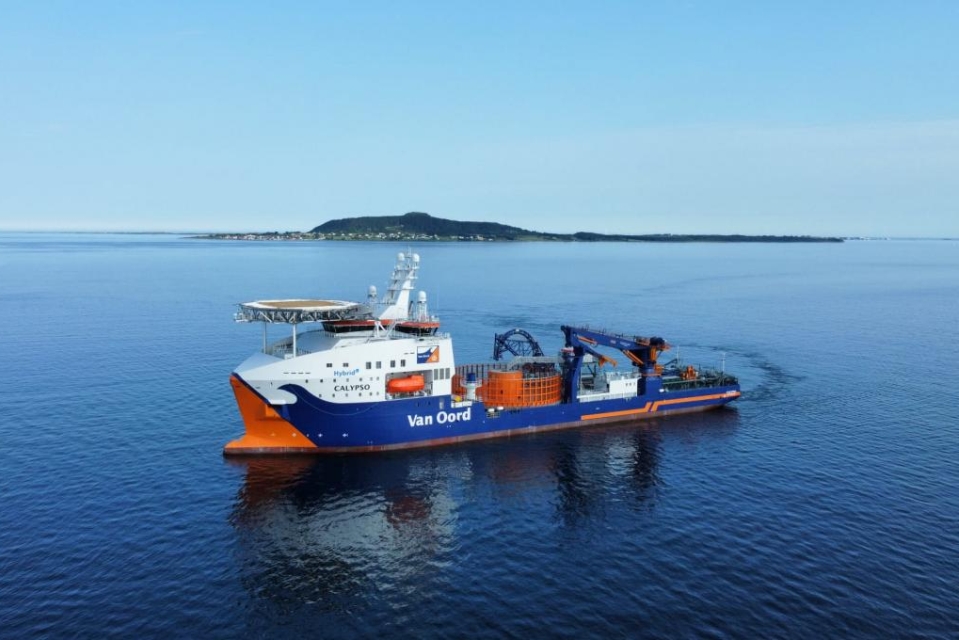This weekend, Van Oord’s new cable-laying vessel Calypso will be christened. The Calypso is a complement to the existing cable-layer Nexus. But what jobs will the Calypso perform exactly and what makes this ship special?
How exactly does cable laying work? The process begins with preparations at the turbine foundations, where another ship’s crew prepares the foundations. Each foundation features a “messenger wire”, pulled aboard the Calypso for the initial step to pull the cable into the foundation.
A protection system is then attached around the cable, and the entire assembly is connected to the pull wire, lowered into the water, and secured at the base of the wind turbine foundation. From there, the cable is pulled up to the top of the foundation.
Calypso then sets course for the next foundation, while the carousel and tensioners work seamlessly to lay the cable on the seafloor. At the second foundation, calculations determine the required cable length to reach the tower. This end is lowered into the water with a quadrant and pulled into the tower. This entire process is then repeated for the other turbine locations.
Between two turbines, an average cable length of 1 to 1.5 kilometres is installed. This procedure is executed for approximately three cables every 24 hours.
Also read: Princess Alexia to christen namesake in Van Oord’s fleet
Calypso features
So, what makes the Calypso special? According to Van Oord, the vessel offers more capacity, double carousels, greener operations and continued automation development. Calypso measures 131 metres in length and 28 metres across the beam. It can accommodate a maximum of ninety people. Calypso’s midship does not only have a cable carousal on deck, but also an identical one below-deck, bringing its total cable-carrying capacity to 8,000 tonnes.
While the Calypso will mainly be deployed to install inter-array grid and export cables for offshore wind projects, the double carousel makes it suitable for laying HVDC (high-voltage direct current) cables. These cables will play an important role particularly for offshore wind farms that are further away from the coast.
Also read: Van Oord lands first phase of Yangtze Canal project
The Calypso has been designed with the latest sustainable technologies. Apart from the ability to run on biofuel, this hybrid vessel has future-ready engines with built-in flexibility to anticipate e-fuels. It has two huge batteries weighing 16,000 kilograms, aiding in maintaining the engines’ consistent operation and enhancing overall efficiency. The vessel has a shore supply connection and a state-of-the-art energy management system with significantly reduces CO2, NOx and SOx (carbon, nitrogen and sulphur oxides) emissions.
For Van Oord, the Calypso is a key strategic addition to its offshore wind fleet in a rapidly growing market. In addition, the vessel boasts a high degree of automation in the installation process. From vessel’s speed and position to the measured deployment of cable, every aspect is automated and under constant watch.
Watch a video about the Calypso below. Picture (top) by Van Oord.
Also read: VIDEO: Van Oord breaks own subsea rock installation world record








